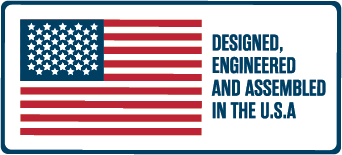Filters
Why doesn’t my acid neutralizer raise pH as well as it did when new?
Many acid neutralizers are used on low pH water that also has high levels of iron or sediment. In these cases the mineral, over time, may collect oxidized iron and sediment that can’t be removed during normal backwashes. The iron and sediment will coat the mineral and not let it dissolve normally or take up volume that is meant for neutralizing material. When this happens, rebedding the tank may be required. It is advisable to make sure that the well pump can deliver enough flow and that the installed backwash line can deliver the proper flow to drain. All of our spec sheets have the recommended flow rate and backwash rate for each of our systems.
Why does my upflow neutralizer reduce pressure?
Why doesn’t my Simplus filter remove sulphur?
Softeners
How does a softener remove hardness?
Is softened water detrimental to my health?
What is the purpose of salt in the brine (salt storage) tank?
Is a softener harmful to my septic system?
What kind of salt should I use in the brine tank?
When do I add salt and how much?
How much water should be standing in the salt storage (brine) tank?
Why is dirt in my brine tank?
Do the water softener resin beads need to be cleaned with resin cleaners?
Why does my water softener make loud noise at night?
Why is my brine tank overflowing?
Why am I not using salt?
Media
What do I use to recharge my acid neutralizer? How often should it be done?
Do I need to rebed my multi-media filter after a certain amount of time?
What is the expected life span of the resin bed in the water softener?
Reverse Osmosis
How does a reverse osmosis unit work?
What maintenance is required on a reverse osmosis unit?
What does the light mean on my Puro 35T faucet?
Can I use reverse osmosis water in my automatic ice maker and water dispenser?
Why should I have nitrates and lead removed from my water?
Setting Your Timer
How to I set the time on a 460i or 460 TC Timer?
How do I set the time on my MP-MCA valve?
How do I set the time on a MBA, or MP MBA valve?
How do I set the time on my 568 valve?
Ultraviolet Units
How does a UV unit work?
What maintenance is required on a UV unit?
What does the light mean on my UV unit?
Why is the UV light chirping?
Please note that the alarm can also indicate that the lamp is not working properly. Other than replacing the bulb and cleaning the quartz, the power supply may be defective and need to be replaced.
My lamp is still on why do I have to replace the lamp?
How do I know it’s killing the bacteria?
Water Testing
Do we test for bacteria?
What is the difference between Ferric Iron and Ferrous Iron?
Ferrous Iron is clear water iron. This form of iron (to a certain level) can be removed by a water softener.
What is compensated hardness?
Tested water hardness + 2.5 grain per gallon (gpg) for every 1 ppm of iron + 4.0 gpg for every 1 ppm of manganese.
For more information about your water, check out Taking the Test and Understanding Your Water







